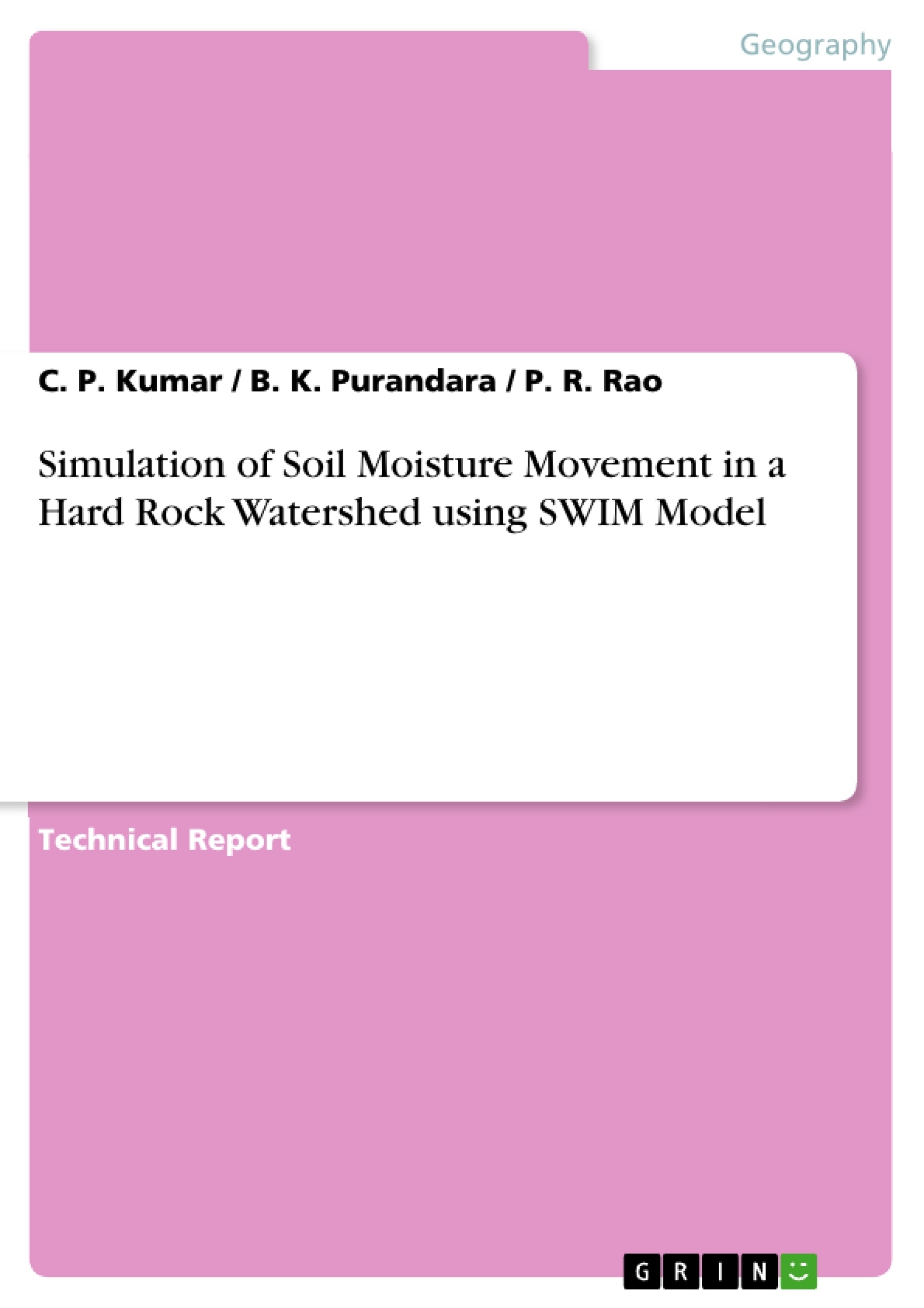A very large fraction of the water falling as rain on the land surfaces of the earth or applied irrigation water moves through unsaturated soil during the subsequent processes of infiltration, drainage, evaporation, and the absorption of soil-water by plant roots. The water movements in the unsaturated zone, together with the water holding capacity of this zone, are very important for the water demand of the vegetation, as well as for the recharge of the ground water storage. A fair description of the flow in the unsaturated zone is also crucial for predictions of the movement of pollutants into ground water aquifers.
A number of simulation models are available for investigating the soil water balance. SWIM (Soil Water Infiltration and Movement) is a physically based, isothermal, one dimensional model of water flow through the soil coupled with a simple crop water extraction model in which the growth of the canopy and of the root system is a predetermined input. SWIM is driven by rainfall and potential evaporation, and so appears to be more appropriate than few other similar models if the available meteorological data are limited.
The present study aims at modelling of soil moisture movement in Barchi watershed (Karnataka) using SWIM. Field and laboratory investigations were carried out to determine the saturated hydraulic conductivity at eight locations using Guelph Permeameter and soil moisture retention characteristics using the Pressure Plate Apparatus. The van Genuchten parameters of soil moisture retention function and hydraulic conductivity function were obtained through non-linear regression analysis. Daily rainfall and evaporation data of Barchi for the period 1996-97 to 1999-2000 were used for the simulations. Water balance components like runoff, evapotranspiration and drainage (groundwater recharge from rainfall) were determined through SWIM.
Inhaltsverzeichnis (Table of Contents)
- List of Figures
- List of Tables
- Abstract
- INTRODUCTION
- STUDY AREA
- METHODOLOGY
- General
- Soil Moisture Characteristics
- Soil Moisture Retention Curves
- Pressure Plate Apparatus
- Saturated Hydraulic Conductivity
- Guelph Permeameter
- van Genuchten Parameters
- DESCRIPTION OF SWIM MODEL
- Introduction
- Water Movement
- Richards' Equation
- Hydraulic Properties
- Initial and Boundary Conditions
- Solute Transport
- Advection-Dispersion Equation
- Solute Initial and Boundary Conditions
- Limitations of the Model
- ANALYSIS AND RESULTS
- General
- Soil Moisture Characteristics
- Model Conceptualization
- Simulation of Water Balance Components
- Concluding Remarks
- CONCLUSION
- REFERENCES
- ANNEXURE
Zielsetzung und Themenschwerpunkte (Objectives and Key Themes)
This report examines the movement of soil moisture in a hard rock watershed using the SWIM model. The study aims to simulate the soil moisture movement and determine groundwater recharge from rainfall. This is achieved through a numerical modeling approach. * **Soil moisture movement in hard rock watersheds:** The report investigates the dynamics of soil moisture in a specific type of watershed, focusing on the challenges and complexities associated with hard rock environments. * **Groundwater recharge estimation:** The study aims to quantify the amount of rainfall that infiltrates and contributes to groundwater recharge. * **SWIM model application:** The research utilizes the SWIM model, a widely used tool for simulating water flow and solute transport in the unsaturated zone, to simulate the soil moisture movement in the study area. * **Hydrological processes in arid and semi-arid regions:** The report explores the importance of understanding hydrological processes in regions characterized by limited water resources and high reliance on groundwater. * **Sustainable water management:** The findings of this study contribute to the broader understanding of groundwater recharge processes, aiding in the development of sustainable water management strategies for arid and semi-arid regions.Zusammenfassung der Kapitel (Chapter Summaries)
Introduction
This chapter provides a general introduction to the topic of groundwater recharge in arid and semi-arid regions, highlighting the significance of the study. It sets the context for the research by discussing the importance of balancing ground water extraction with recharge in areas with scarce water supplies.Study Area
This chapter describes the specific hard rock watershed used for the study. It includes details about the drainage system, rainfall and evaporation patterns, and other relevant characteristics of the study area.Methodology
This chapter outlines the methods used to collect data and simulate the soil moisture movement. It details the steps involved in determining soil moisture characteristics, hydraulic conductivity, and the van Genuchten parameters used in the SWIM model.Description of SWIM Model
This chapter provides a comprehensive overview of the SWIM model, explaining the model's components, its theoretical basis, and how it is used to simulate water movement and solute transport in the unsaturated zone. It also discusses the limitations of the model.Analysis and Results
This chapter presents the results obtained from the simulation of the soil moisture movement using the SWIM model. It includes discussions on the model's conceptualization, simulated water balance components, and the interpretation of the results.Schlüsselwörter (Keywords)
The study focuses on the simulation of soil moisture movement, groundwater recharge, hard rock watersheds, SWIM model, arid and semi-arid regions, unsaturated zone, numerical modeling, and sustainable water management. These keywords encompass the primary concepts and research interests explored in the report.- Quote paper
- C. P. Kumar (Author), B. K. Purandara (Author), P. R. Rao (Author), 2014, Simulation of Soil Moisture Movement in a Hard Rock Watershed using SWIM Model, Munich, GRIN Verlag, https://www.grin.com/document/281973



